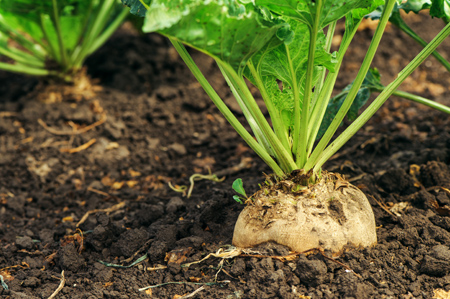Sweet Spot: China’s Inner Mongolia Region Rushes to Churn Out Sugar Beet
Category: Sugar
 (New York Times) – After decades of growth on the back of the coal mines that dot its vast grasslands, the Chinese region of Inner Mongolia is turning to sales of an altogether different kind of commodity to energise its economy – sugar.
(New York Times) – After decades of growth on the back of the coal mines that dot its vast grasslands, the Chinese region of Inner Mongolia is turning to sales of an altogether different kind of commodity to energise its economy – sugar.
Improved farming techniques and increased mechanisation mean that swathes of Inner Mongolia, which stretches for thousands of kilometres along China’s northwestern border, are being turned over to beet cultivation, especially as government support for rival crop corn falters.
That push could ramp up sugar output in the world’s No.4 producer of the commodity at a time when it is battling to meet rising demand, with bigger pay packets stoking appetite for sweet treats like ice cream or fizzy drinks.
It could help shake up an industry that has typically relied heavily on cane grown deep in its much-warmer south, while also crimping imports of sugar from top suppliers such as Brazil and Australia, dragging further on international prices that have slumped over 20 percent this year.
“Inner Mongolia’s production has been the shining light for the beet industry in China,” said Tom McNeill, managing director of Australia’s Green Pool Commodities, a sugar industry advisory firm.
The volume of sugar produced from beet in Inner Mongolia jumped by a fifth to around 460,000 tonnes in the 2016/17 crop year, with the country’s total beet sugar output standing at more than 1.1 million tonnes, or 11.6 percent of China’s overall sugar production.
Output is on track to keep surging, driven by improved farming techniques involving planting beet more densely and irrigating more sparingly to ensure higher sugar content, said Sun Xiucai, an agent for Belgian beet seed supplier SESVanderHave.
And many growers are using more machinery to lower costs, with Inner Mongolia’s flat, wide-open terrain particularly suited to mechanisation.
“We use a transplanter to plant the seedlings … a topper to remove beet leaves and a harvester,” said Yang Jianbo, a farmer with around 90 hectares of beet in Inner Mongolia.
High local sugar prices in the wake of government steps to reduce imports via anti-dumping duties have also boosted the incentive to produce the commodity.
“It is much more profitable than other grains or crops in Inner Mongolia,” said Yang. Inner Mongolian growers will be paid up to 530 yuan ($81) per tonne of beets this year, more than twice what European Union growers will get.
SUGAR RUSH Millers, which process beet or cane into refined sugar, have been rushing to expand in the region, with industry estimating that over $600 million will be spent on eight new plants that will more than double current production capacity.
Inner Mongolia Biohymn New Agricultural Technology Ltd is building two factories with daily slicing capacity of 6,000tonnes each, according to a company manager, among the largest mills in China.
Inner Mongolia Holmer Sugar Industry Co Ltd, Chifeng Zhongyi Sugar Co Ltd and Angel Yeast Co Ltd are also constructing plants to start operating by October 2018, company representatives said.
Shandong province-based sugar to soybean firm RizhaoLingyunhai Sugar Group Co Ltd, which owns China’s biggest sugar refinery in east coast port Rizhao, is spending 1 billion yuan ($150 million) on a 1 million tonne-capacity project in Inner Mongolia.
The surge in investment comes after years of decline inChina’s sugar industry, with climbing labour costs hitting producers in the south, where cane has to be cut by hand as large harvesting machines are unable to work on hilly plantations.
This year, beet mills made more than 1,000 yuan per tonne on each tonne of sugar produced, compared with about 400 yuan for cane mills, according to mills and analysts.
AB Sugar China, owned by Associated British Foods, sold five cane factories in the south last year but held on to its two beet mills, including one in Inner Mongolia.
“Sugar beet has become a preferred choice for growers in the northern region as its productivity relative to other crops has improved. We expect this trend to continue,” the company said in a statement to Reuters.
AND THE BEET GOES ON?
Inner Mongolia may produce 500,000 tonnes of sugar in the coming crop year, say analysts, and could surpass Guangdong, China’s No.3 sugar-producing province, in two years.
But the longer-term outlook could be clouded when the anti-dumping tariffs imposed by Beijing expire in three years, likely dragging on sweetener prices.
Growers will need to supply beet with higher sugar content for mills to maintain margins even as prices fall.
Li Qinghui, deputy manager at Inner Mongolia Holmer, says his firm processed some beet with 17-percent sugar content this year, close to average levels in top beet grower France, and there’s room for further improvement across the province.
“In the long-term, beet has a competitive edge,” said seed dealer Sun.




